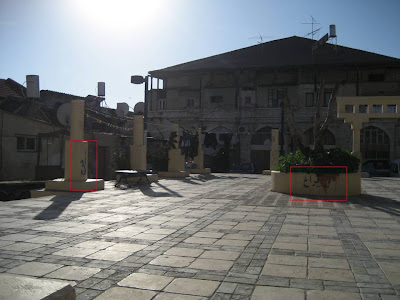"When you build something, you cannot build it in isolation, but must repair the world around it and within it so that the larger world at that one place becomes more coherent and more whole."
- Christopher Alexander
 A Pattern Language
A Pattern Language (1977) constitutes the second volume of Christopher Alexander's previous book,
The Timeless Way of Building (1979) in which he explains the idea of patterns in architecture and provides the theory and instruction for the use of what he calls "the pattern language".
A Pattern Language provides the actual pattern language, and describes detailed patterns for building and planning.
The book is meant to provide "a working alternative to our present ideas about architecture, building, and planning", to be used by anyone to guide them in the actual process of construction - whether it be a private home or a public building. The language is practical, based on natural considerations, and comes out of Alexander's own building and planning efforts during the 8 years prior to the publishing of the book.
The language consists of 253 patterns, with which one can create an infinite variety of combinations. Each pattern presents a solution to a common problem in our environment. Just as words must be combined and related to each other to form a coherent and useful language, the patters must be related to each other to form a pattern language.
The patterns are ordered in a straight linear sequence from largest to smallest scales: regions and towns, neighborhoods, clusters of buildings, buildings, rooms and alcoves, and details of construction. This order is essential to the way the language works, and the sequence is based on the connection between the patterns. Each pattern is connected to certain "larger" patterns which come above it in the language, and to certain "smaller" patterns which come below it in the language (Alexander).
Example of a pattern:
Pattern 167: Six-foot balcony
Problem: Balconies and porches which are less than six feet deep are hardly ever used.
Solution: Always build balconies and porches at least six feet deep, so that there is room for a table and at least two or three people to sit comfortably. They should have half-open enclosures around them (partial privacy makes people more comfortable), and should be recessed (since it provides a sense of security).
This pattern is connected to patterns "above" it - such as "arcades" and "galleries, surround" - and to patterns "below" it - such as "half-open wall" and "column places".
The pattern language takes a holistic approach to design; there is a connection between all the different elements. No pattern is an isolated identity - each pattern can exist in the world, only to the extent that it is supported by other patterns (Alexander).
This represents the fundamental view of the world.
















 Just a few hundred meters westward, I find an empty corner that a house used to occupy. A passerby informs me that an Arab family once used to live here, but the house was demolished a few years ago due to some form of "illegal building".
Just a few hundred meters westward, I find an empty corner that a house used to occupy. A passerby informs me that an Arab family once used to live here, but the house was demolished a few years ago due to some form of "illegal building".


 A Pattern Language (1977) constitutes the second volume of Christopher Alexander's previous book, The Timeless Way of Building (1979) in which he explains the idea of patterns in architecture and provides the theory and instruction for the use of what he calls "the pattern language".
A Pattern Language (1977) constitutes the second volume of Christopher Alexander's previous book, The Timeless Way of Building (1979) in which he explains the idea of patterns in architecture and provides the theory and instruction for the use of what he calls "the pattern language".